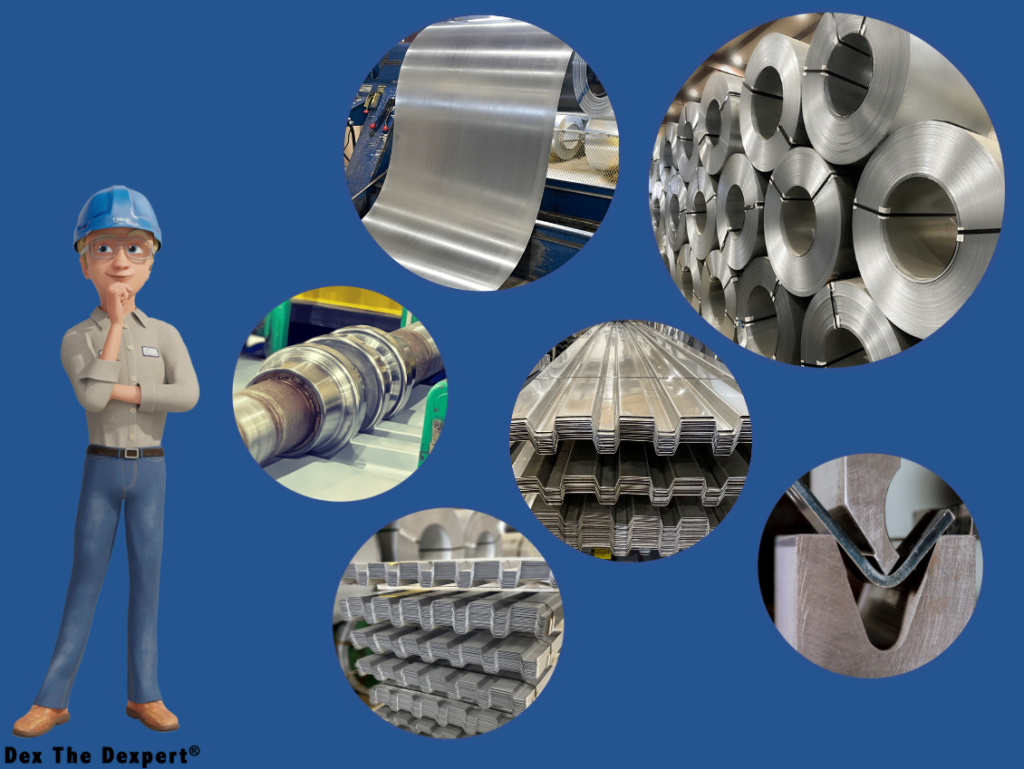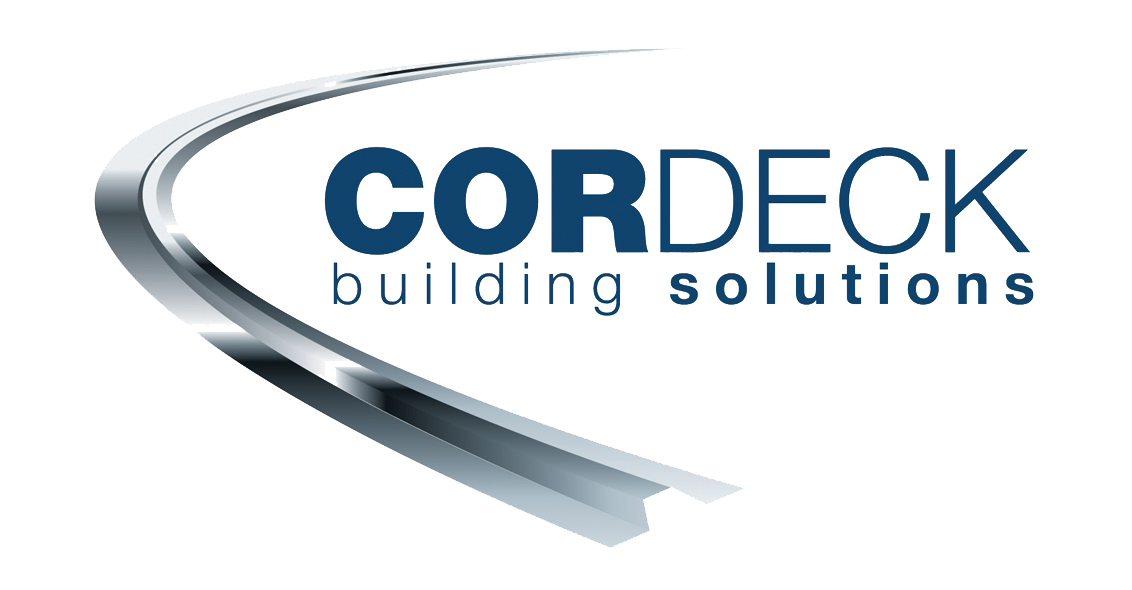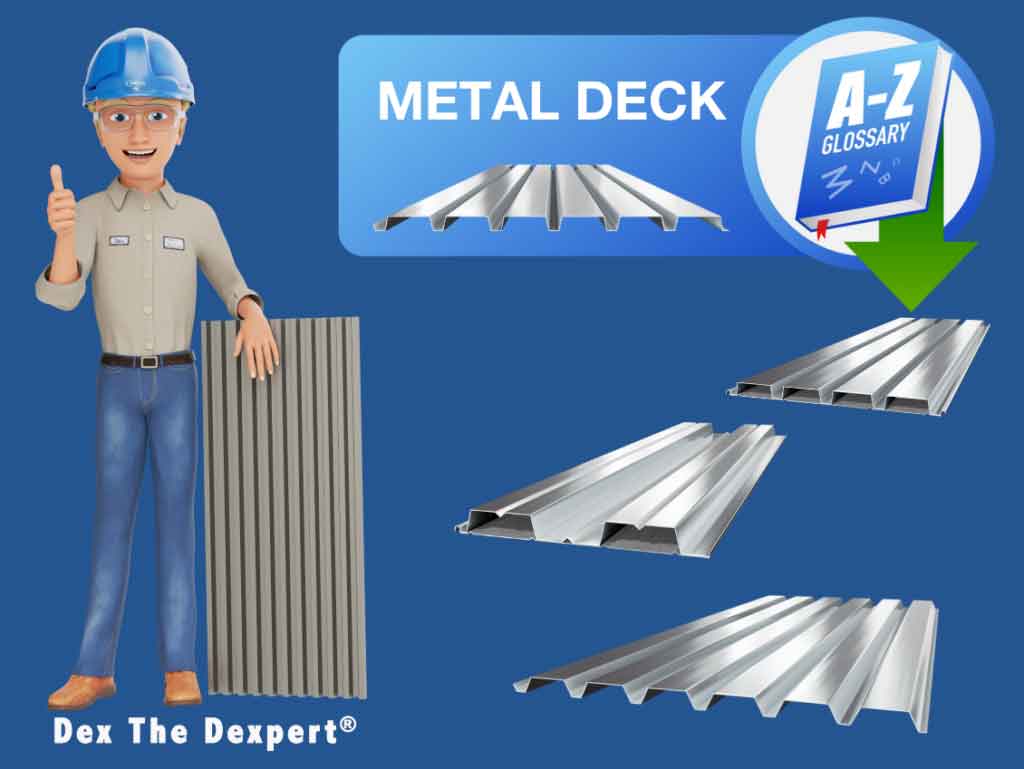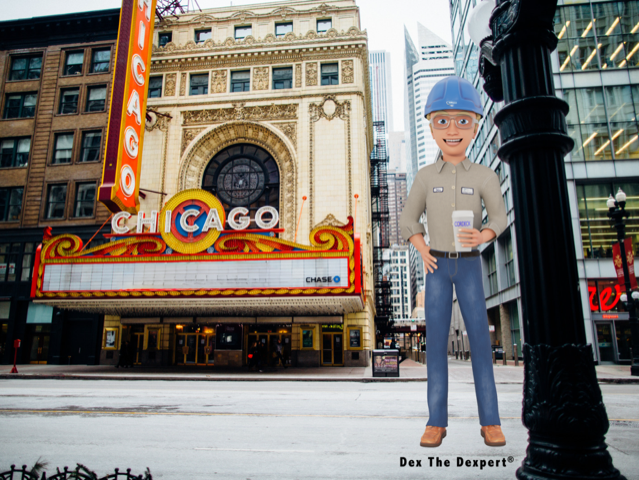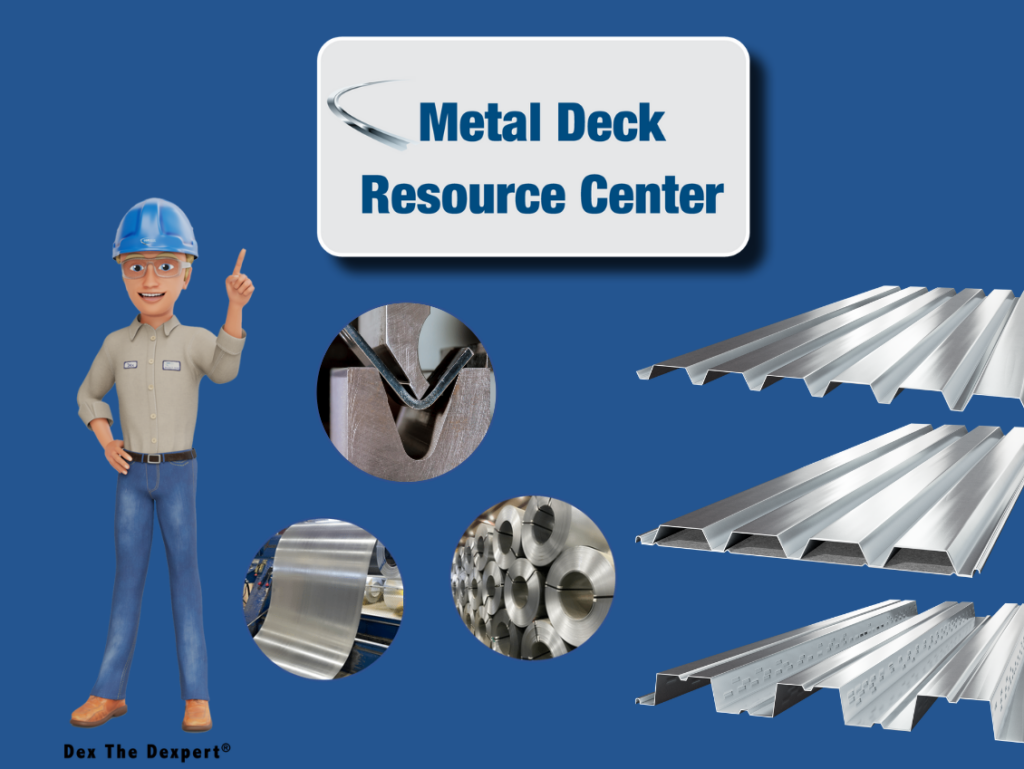Mastering Metal Deck Construction: A Guide to Using Ridge Plates
December 27th, 2023
Metal deck construction is a popular choice for creating durable and versatile structures. One essential element in this type of construction is the ridge plate, a crucial component that ensures stability and strength in the roofing system. In this blog post, we’ll explore the significance of ridge plates and provide a comprehensive guide on how to use them effectively in conjunction with metal decks.
A ridge plate is a structural element designed to connect and support the two sides of a sloped metal roof at its peak or ridge. It plays a vital role in distributing loads evenly across the metal deck, preventing sagging, and ensuring the overall stability of the structure. Ridge plates are typically made of steel, offering high tensile strength and corrosion resistance to withstand various environmental conditions.
Installation Steps:
- Assessment and Planning: Before you begin the installation process, thoroughly assess the structural requirements of the building and the specific characteristics of the metal deck. Consider factors such as the roof pitch, load-bearing capacity, and local building codes.
- Material Selection: Choose a high-quality ridge plate that complements the metal deck material. Ensure that the ridge plate is corrosion-resistant, weatherproof, and meets industry standards for strength and durability.
- Preparation of Metal Deck: Clean the metal deck surface to remove any dirt, debris, or rust. Ensure that the deck is free of sharp edges or protruding elements that may interfere with the installation of the ridge plate.
- Positioning the Ridge Plate: Place the ridge plate along the peak of the metal deck, ensuring that it aligns with the centerline of the structure. Use chalk lines or other marking tools to guide the placement of the ridge plate accurately.
- Fastening the Ridge Plate: Secure the ridge plate to the metal deck using appropriate fasteners, such as screws or bolts. Follow the manufacturer’s recommendations for spacing and quantity of fasteners to ensure a strong and secure connection.
- Weatherproofing: Apply weatherproofing measures around the ridge plate to prevent water infiltration. Seal gaps and joints with appropriate sealants to ensure a watertight seal, protecting the underlying structure from potential water damage.
- Inspection and Quality Check: Conduct a thorough inspection of the installed ridge plate to ensure that it meets all structural and safety requirements. Check for proper alignment, secure fastening, and adherence to building codes and regulations.
Incorporating a ridge plate into your metal deck construction is a critical step in ensuring the longevity and structural integrity of the building. By following these installation steps and paying attention to detail, you can master the art of using ridge plates effectively, contributing to a robust and reliable metal deck roofing system.
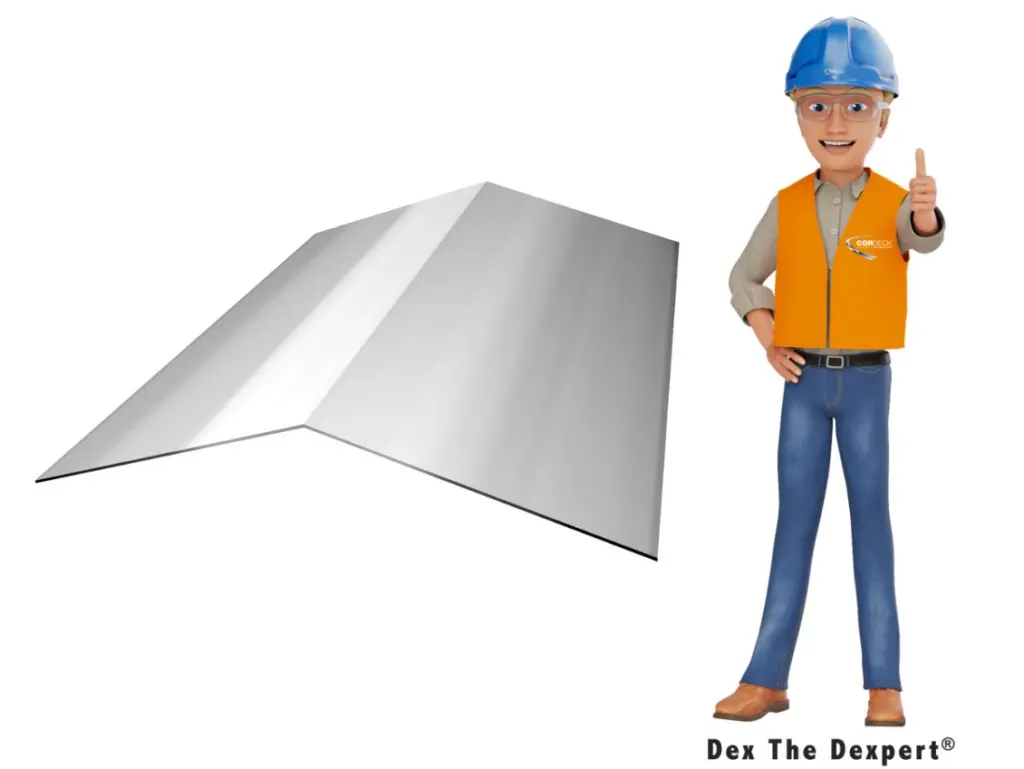
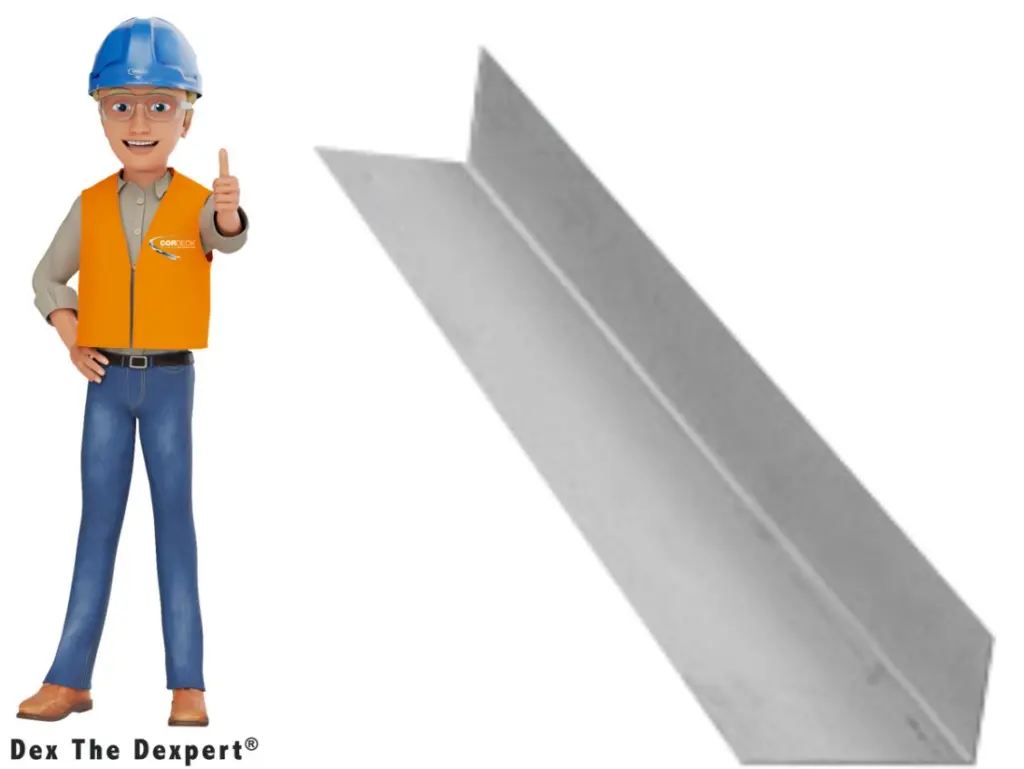
Mastering Metal Deck Construction: A Guide to Effective End Closures
December 20th, 2023
Metal decking is a popular choice in construction for its durability, versatility, and cost-effectiveness. When working with metal deck systems, it’s crucial to pay attention to details that enhance performance and longevity. One such detail is the proper use of end closures. In this guide, we’ll explore why end closures are important and how to effectively implement them in your metal deck construction projects.
Understanding the Role of End Closures:
1. Moisture Management:
Metal decks are often exposed to the elements, making them susceptible to moisture infiltration. End closures act as a barrier, preventing water from seeping into the ends of the metal deck. This is especially important for decks located in areas with high rainfall or humidity.
2. Preventing Corrosion:
Corrosion is a common concern with metal structures. By sealing the ends of metal decks with closures, you create a protective barrier that reduces the risk of corrosion caused by moisture, preventing long-term damage and preserving the integrity of the structure.
3. Enhancing Thermal Performance:
Properly installed end closures contribute to improved thermal efficiency by minimizing air leakage. This is particularly significant in structures where temperature control is essential, as it helps maintain a comfortable interior environment and reduces energy consumption.
Choosing the Right End Closure Material:
1. EPDM (Ethylene Propylene Diene Monomer) Rubber:
EPDM rubber closures are a popular choice for their weather resistance and flexibility. They provide an effective seal against moisture and are durable, ensuring a long lifespan for your metal deck.
2. Foam Tape:
Foam tape closures are easy to install and offer excellent insulation. They come in various thicknesses, allowing you to choose the right level of insulation for your specific project. Additionally, foam tape is resistant to moisture and helps create an airtight seal.
3. Metal End Caps:
Metal end caps provide a sturdy and long-lasting solution for sealing metal deck ends. They are often made from the same material as the deck itself, ensuring compatibility and a seamless appearance.
Installation Steps:
1. Clean the Ends:
Before installing end closures, ensure that the ends of the metal deck are clean and free from debris. This promotes better adhesion and ensures a secure seal.
2. Apply Sealant:
Depending on the chosen closure material, apply a suitable sealant to the ends of the metal deck. Ensure complete coverage to prevent any gaps that could compromise the effectiveness of the closure.
3. Secure the Closure:
Install the end closures securely, following the manufacturer’s guidelines. This may involve fastening metal end caps or applying pressure to ensure proper adhesion for rubber or foam closures.
4. Inspect and Maintain:
Periodically inspect the end closures for signs of wear, damage, or deterioration. Replace any damaged closures promptly to maintain the protective barrier and prolong the life of the metal deck.
Incorporating end closures into your metal deck construction projects is a small detail that can make a big difference in the overall performance and longevity of the structure. By understanding the role of end closures, choosing the right materials, and following proper installation steps, you can ensure that your metal deck stands the test of time, resisting moisture, corrosion, and thermal inefficiencies. Mastering the art of end closures is a valuable skill for any builder or contractor working with metal deck systems
Unveiling the Future: Innovative Metal Deck Designs That Redefine Outdoor Spaces
November 15th, 2023
In the world of deck construction, metal has emerged as a versatile and resilient material that opens the door to a realm of innovative possibilities. Today, we explore the cutting-edge designs that push the boundaries of conventional outdoor spaces. From avant-garde aesthetics to eco-friendly solutions, these metal deck designs are redefining the way we envision and experience our outdoor environments.
Futuristic Minimalism: The Rise of Sleek Metal Profiles
Innovative metal deck designs are embracing a futuristic aesthetic, characterized by clean lines, minimalistic profiles, and a seamless integration with surrounding landscapes. Architects and designers are opting for sleek metal profiles that exude sophistication, creating outdoor spaces that are both modern and timeless.
Eco-Conscious Decking: Melding Sustainability with Style
As environmental consciousness grows, so does the demand for sustainable construction materials. Innovative metal deck designs incorporate eco-friendly features, such as recycled materials, energy-efficient lighting, and permeable surfaces. These decks not only minimize environmental impact but also serve as a visual testament to the harmony between design and nature.
Interactive and Smart Decks: Technology Meets the Outdoors
Imagine controlling the ambiance of your outdoor space with a touch of your smartphone. Innovative metal decks are integrating smart technologies, including LED lighting systems, automated shading solutions, and even weather-responsive features. These decks not only provide functional advantages but also add an element of futuristic flair to outdoor living.
In summary, the primary difference between residential and nonresidential construction lies in their intended use, design, building codes, and complexity. Residential construction focuses on creating homes for living, while nonresidential construction caters to a wide range of functional and commercial needs.
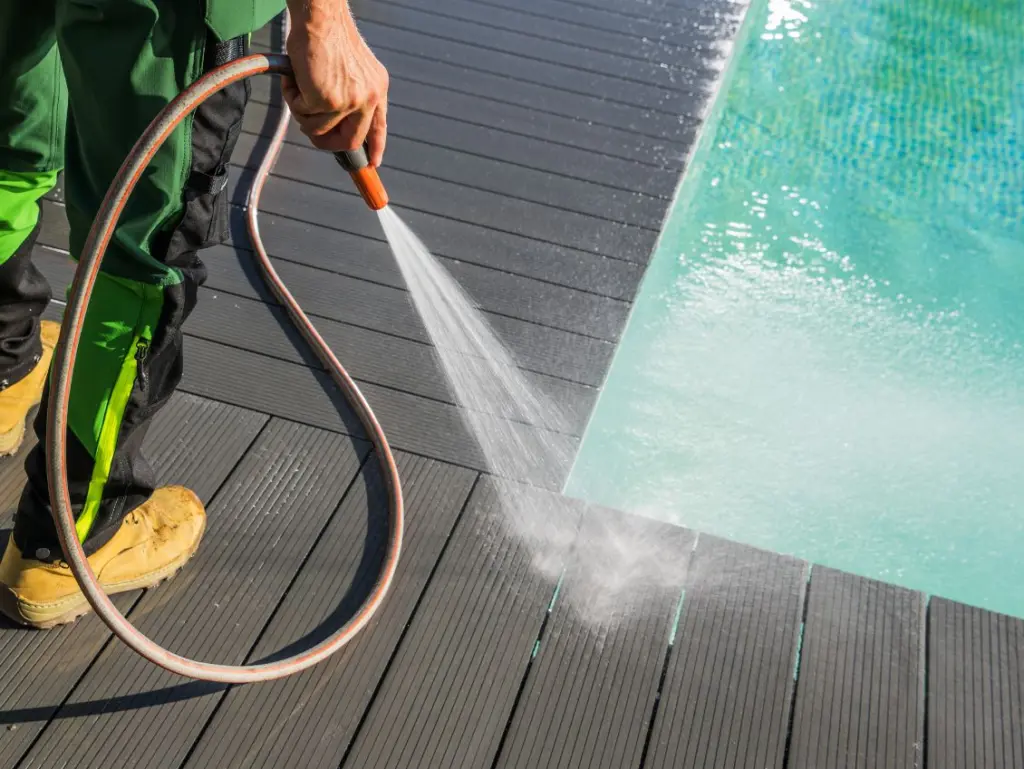
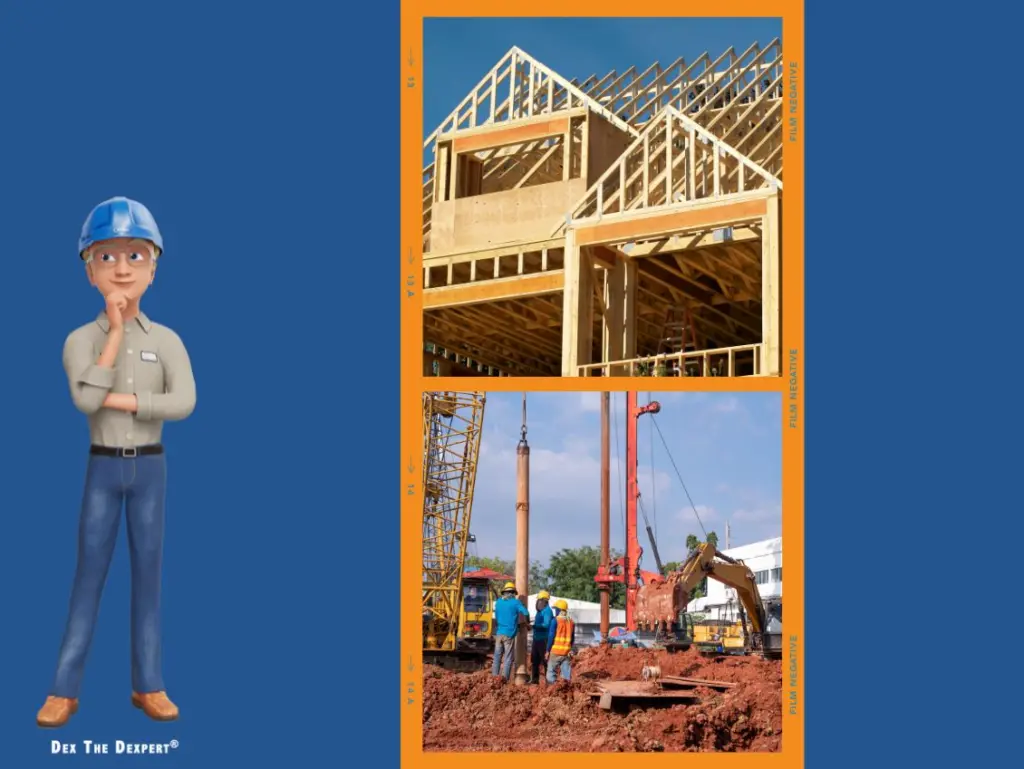
Residential and nonresidential construction refers to two distinct categories of construction projects, each serving different purposes. Here are the key differences between them:
- Purpose:
-
- Residential Construction: This category involves the construction of buildings and structures that are designed for people to live in. It includes single-family homes, multi-family dwellings (apartments and condominiums), and other housing units.
- Nonresidential Construction: Nonresidential construction pertains to the creation of structures that are not intended for residential use. These projects encompass commercial, industrial, institutional, and public buildings, such as offices, warehouses, schools, hospitals, retail stores, factories, and government facilities.
- Design and Function:
-
- Residential Construction: Residential buildings are primarily designed for comfortable living and typically have bedrooms, kitchens, bathrooms, and living areas. The focus is on aesthetics and creating a comfortable living environment.
- Nonresidential Construction: Nonresidential structures are designed for specific functions, such as commerce, education, healthcare, manufacturing, or storage. The design and layout are tailored to meet the needs of the intended use.
- Building Codes and Regulations:
-
- Residential Construction: These projects are subject to residential building codes and regulations that govern aspects like safety, energy efficiency, and habitability. These codes often vary by region and are typically less stringent than those for nonresidential construction.
- Nonresidential Construction: Nonresidential construction is subject to more complex and rigorous building codes and regulations due to the diverse functions of the structures and the potential presence of large numbers of people. Compliance with safety, accessibility, fire codes, and other specific standards is critical.
- Scale and Complexity:
-
- Residential Construction: Residential projects are generally smaller in scale and less complex than nonresidential ones. They typically involve a single family or a limited number of units.
- Nonresidential Construction: Nonresidential projects can vary widely in scale and complexity. They often require specialized design, engineering, and construction techniques to meet the unique needs of the structure’s function.
- Project Phases:
-
- Residential Construction: The construction process for residential buildings typically involves fewer phases, such as site preparation, foundation, framing, interior finishing, and landscaping.
- Nonresidential Construction: Nonresidential projects may have more intricate phases, including architectural design, engineering, zoning approvals, and more specialized systems and equipment installation.
- Investment and Financing:
-
- Residential Construction: Financing for residential construction is typically handled by individual homeowners, real estate developers, or residential construction companies.
- Nonresidential Construction: Nonresidential projects often require more substantial investments and are typically funded by businesses, organizations, institutions, or government entities.
In summary, the primary difference between residential and nonresidential construction lies in their intended use, design, building codes, and complexity. Residential construction focuses on creating homes for living, while nonresidential construction caters to a wide range of functional and commercial needs.
Here in Wisconsin, the weather is already starting to change, and we had our first snow! With the weather and seasons changing it is always important to be aware of how you can protect those who work outdoors or anyone who would be affected by these conditions. Follow these tips to protect yourself against the cold weather!
- Choose loose clothing that keeps you dry. Tight clothing can reduce blood circulation, so choose loose-fitting clothing in multiple layers, which also provides better insulation. Look for moisture-wicking clothing to help keep the body dry. Have a blanket and extra cold-weather clothing handy; if clothing gets wet, it is crucial you dry off and change as soon as possible.
- Protect your head. Research has shown 10% of the body’s heat loss occurs from the head. Wear a winter hat, hood, balaclava, winter hard hat liner or other protective layer to retain heat and protect the ears.
- Do not forget your feet. In addition to the dangers of frostbite, prolonged exposure to wet and cold conditions can lead to trench foot. Work boots should be waterproof and insulated.
- Stay hydrated. Along with plenty of water, the Occupational Safety and Health Administration recommends drinking warm or sweet beverages (such as sports drinks) in the winter. Avoid alcohol, which causes the body to lose heat faster and contributes to dehydration.
- Monitor the weather. Foremen on job sites can set workers up for success by understanding when harsh winter weather is expected. Start the day by checking a mobile weather app, and continue to monitor it.
- Know the signs of cold stress. Workers must be trained regarding how to recognize symptoms of cold stress in themselves and co-workers. The National Institute for Occupational Safety and Health offers information about symptoms and first aid.
- Make a plan. Can work be switched to a different day? If workers need to work outdoors, consider ways to address the issue, such as supplying radiant heaters to warm worksites, shielding work areas from wind, and designating warm locations where workers can take breaks.
Additional information can be found here!


The Backbone of High-Rise Construction: The Importance of Metal Decking in Foundations
October 25th, 2023
When it comes to constructing high-rise buildings, every element matters, from the architectural design to the materials used. Among the critical components of high-rise construction is the foundation, and one often overlooked yet indispensable aspect of this foundation is metal decking. In this blog post, we’ll explore the importance of metal decking in the foundation of high-rise buildings and how it plays a pivotal role in ensuring the safety, durability, and efficiency of these towering structures.
The Basics of Metal Decking
Metal decking is a steel panel used in construction, typically as part of the composite floor system. These panels are installed above steel framing and provide a platform for concrete to be poured on top. The result is a reinforced concrete floor, which is not only strong but also cost-effective and sustainable. When it comes to high-rise construction, metal decking serves as the foundation for the entire building, offering several key advantages.
Structural Integrity
High-rise buildings face enormous structural challenges due to their height and the forces they must endure, such as wind, seismic activity, and the weight of the structure itself. Metal decking provides structural stability by evenly distributing loads, reducing the chances of structural failure. The interlocking nature of metal decking panels ensures that the concrete floor slab is securely connected to the supporting structure, creating a stable and reliable foundation.
Speed and Efficiency
One of the most significant advantages of metal decking is its speed of installation. High-rise construction projects often have tight schedules, and metal decking allows for rapid construction. The ease of installation reduces labor costs and can expedite the overall project timeline, resulting in substantial time and cost savings.
Sustainability
Sustainability is increasingly becoming a focal point in construction. Metal decking contributes to sustainability by being recyclable and helping to improve the energy efficiency of buildings. The thermal mass of the concrete floor slab can help regulate indoor temperatures, reducing the building’s reliance on heating and cooling systems.
Aesthetics and Flexibility
Metal decking isn’t just about functionality; it also plays a role in the aesthetic design of high-rise buildings. The exposed underside of the metal deck can be finished in various ways to achieve the desired look. Additionally, metal decking offers flexibility in terms of layout, allowing architects to design open, column-free spaces that are highly sought after in high-rise buildings.
In the grand symphony of constructing high-rise buildings, metal decking may not be the star of the show, but it’s undeniably the reliable and indispensable backbone. From ensuring structural integrity and fire resistance to expediting construction and contributing to sustainability, metal decking plays a pivotal role in creating safe, efficient, and aesthetically pleasing high-rise structures. In the world of skyscrapers, where every detail matters, metal decking shines as a silent hero of the foundation.
So, the next time you gaze up at a towering high-rise, remember that beneath its majestic exterior lies the strength and reliability of metal decking, enabling these architectural marvels to reach for the sky.
This week is when we build awareness, celebrate diversity, equity, and inclusion, and have access to educational and business resources for our industry!
Members of the construction industry are invited to unite to advance diversity, equity, and inclusion. Construction Inclusion Week encourages participating firms to organize activities on their job sites and in their offices that offer opportunities for construction professionals to discuss commitment and accountability; belonging; supplier diversity; workplace culture; and community engagement. Resources include webinars, videos, and toolbox talks.
To learn more about Construction Inclusion Week and all of the great resources that they have to offer, check out their website here!
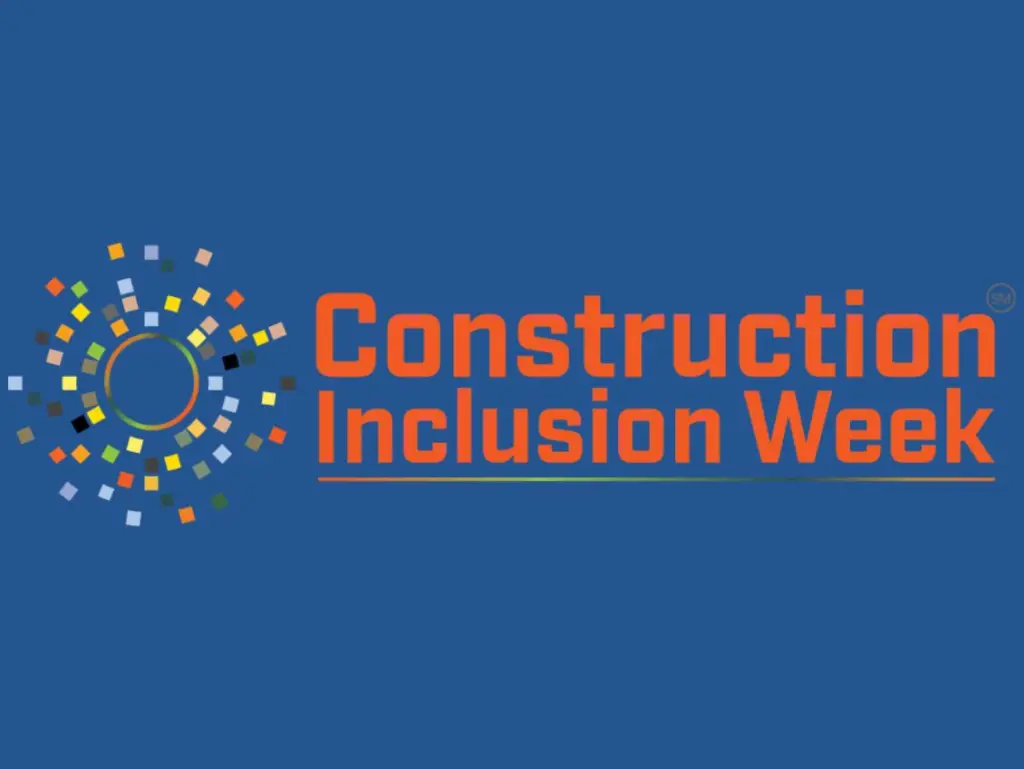
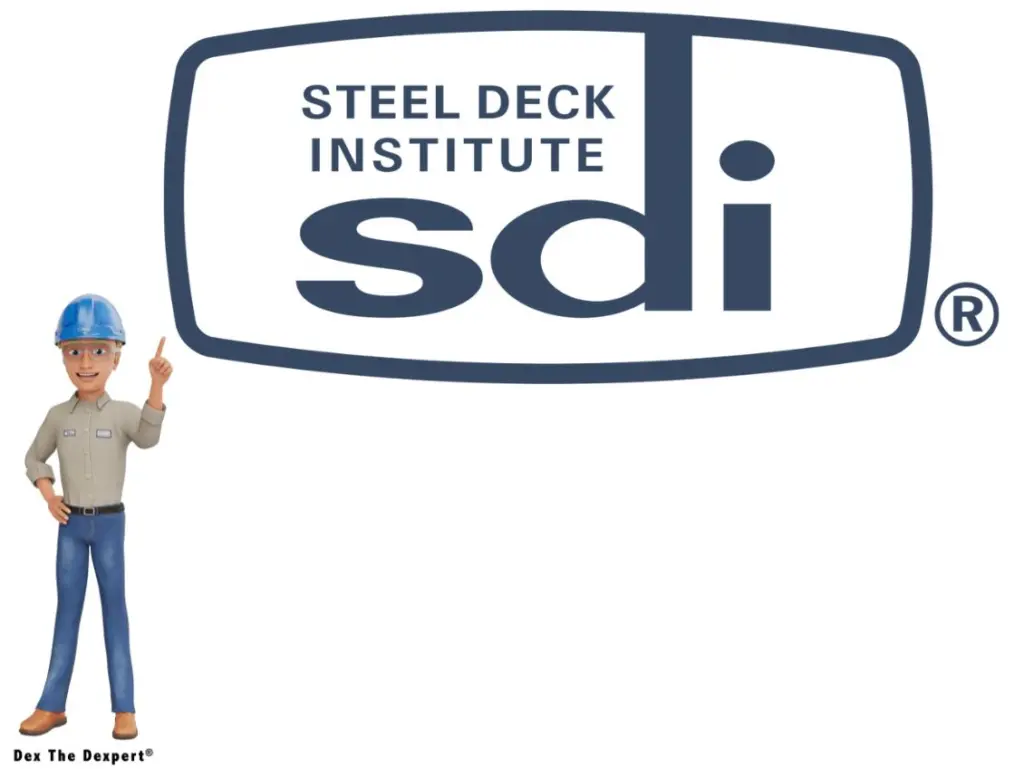
The Steel Deck Institute (SDI) launched an expanded website, sdi.org, with added functionality and information intended to make using steel floor and roof deck easier and more economical.
This expanded website offers features like information on past and current research, magazine articles, webinars, other resources for steel deck, the ability to order or download manuals, and more!
Explore their expanded website here and see everything they have to offer!
“Total construction starts rose 6% in August to a seasonally adjusted annual rate of $1.3 trillion, according to Dodge Construction Network. Nonresidential starts rose 4 percent as a result of a large pickup in manufacturing and transportation buildings. Residential and nonbuilding starts fell 1 percent and 14 percent, respectively.
Year-to-date through August 2023, total construction starts were 5 percent below that of 2022. Residential and nonresidential starts were down 18 percent and 9 percent, respectively; however, nonbuilding starts were up 22 percent. For the 12 months ending August 2023, total construction starts were unchanged. Nonbuilding starts were 20 percent higher, and nonresidential building starts gained 6 percent. Conversely, on a 12-month rolling basis, residential starts posted a 17 percent decline overall.”
Read more and the original article here!
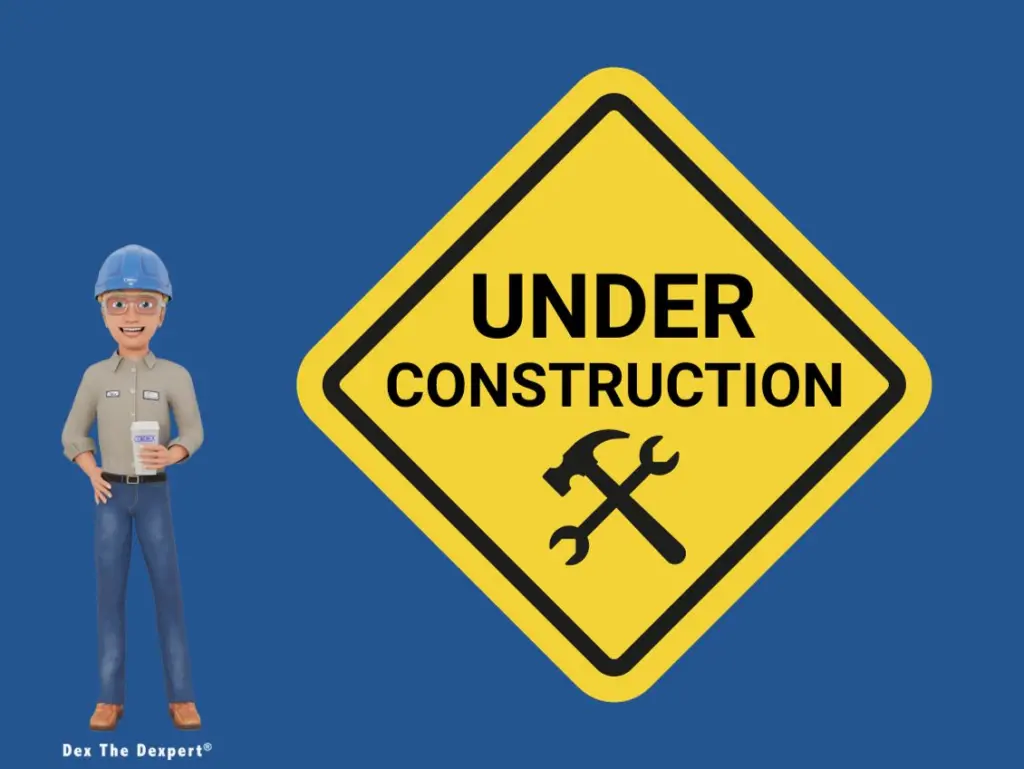
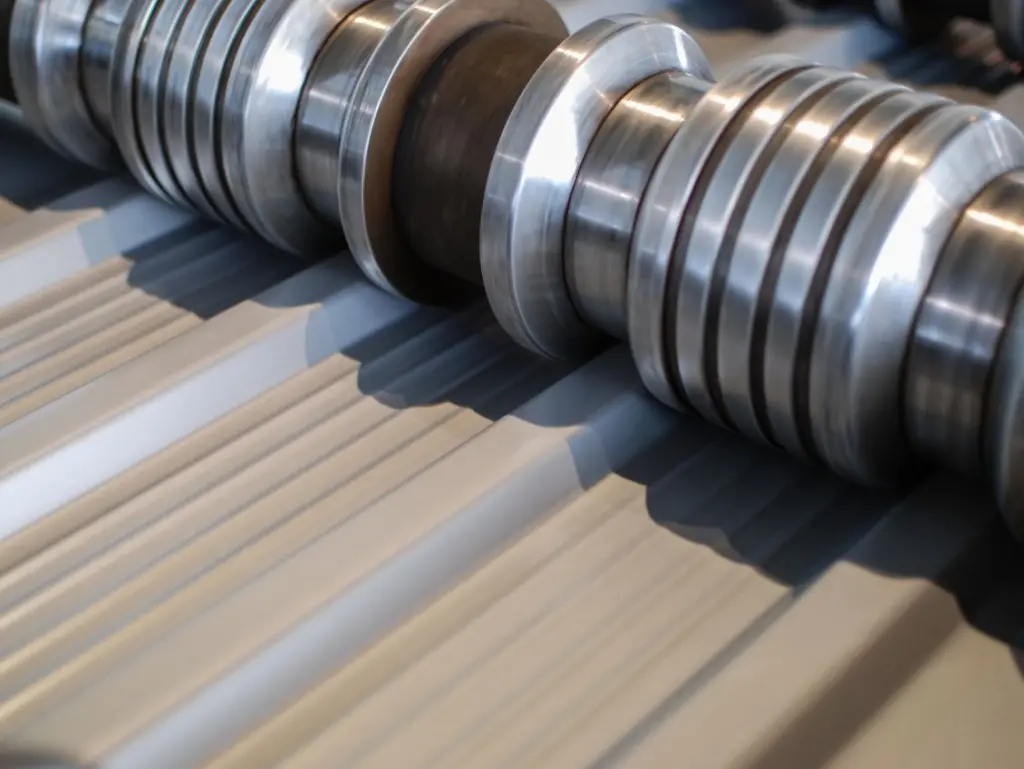
When it comes to manufacturing metal components with unparalleled precision and efficiency, roll forming stands as a true marvel of engineering. This fascinating process has been a cornerstone of many industries for decades, from construction and automotive to aerospace and beyond. In this blog post, we’ll delve into the world of roll forming and explore how it works its magic.
The Basics of Roll Forming
Roll forming is a cold metalworking process used to transform a flat strip or coil of metal into a desired shape. It relies on a series of precisely designed rollers (also known as roll tooling) to progressively bend the metal into the desired profile. The result is a continuous and uniform section of metal, with consistent dimensions along its length.
The Roll Forming Process
- Material Feeding: Roll forming starts with a coil or a flat strip of metal, typically made of steel, aluminum, or other alloys. This material is loaded onto an uncoiler, which feeds it into the roll forming machine.
- Roll Tooling: The heart of the roll forming process is the set of rolls or rollers, each designed to perform a specific bending or shaping operation. These rollers are strategically positioned along the length of the machine.
- Forming Stations: The metal strip passes through a series of forming stations, each housing a set of rollers that gradually shape the metal. These rollers can have various contours and shapes, depending on the final profile required.
- Progressive Shaping: As the metal moves through the machine, it undergoes a series of incremental bends and deformations. The metal gradually takes on the desired shape with each pass through a forming station. This incremental approach ensures precision and consistency.
- Cutting and Shearing: In some cases, roll forming machines are equipped with cutting or shearing mechanisms to trim the formed part to the desired length.
- Final Output: Once the metal has passed through all the forming stations and any necessary cutting or shearing operations, the result is a continuous length of metal with the desired profile.
The history of steel is a fascinating journey that spans thousands of years. Here’s a brief and concise overview:
- Ancient Beginnings: The origins of steel can be traced back to ancient times when humans discovered how to extract iron from its ores. The earliest form of ironworking, known as wrought iron, dates to around 2000 BCE. Wrought iron was produced by heating iron ore in a charcoal fire and then hammering the resulting spongy mass to remove impurities.
- Steel’s Emergence: Around 500 BCE, in what is now modern-day India, a breakthrough occurred with the development of a process known as crucible steelmaking. This method involved melting iron with carbon-rich materials in a crucible, resulting in higher-quality steel.
- Damascus Steel: In the Middle Ages, one of the most famous types of steel emerged in the Middle East, known as Damascus steel. It was renowned for its exceptional sharpness and durability, attributed to a unique forging technique that involved repeatedly folding and layering the steel.
- Industrial Revolution: The true revolution in steelmaking came during the 18th and 19th centuries with the Industrial Revolution. In 1740, Benjamin Huntsman, an Englishman, developed the crucible steel process further, allowing for more consistent and high-quality steel production.
- Bessemer Process: In 1856, Sir Henry Bessemer, an English inventor, introduced the Bessemer process. This innovation involved blowing air through molten iron to remove impurities and adjust carbon content, leading to mass production of high-quality steel.
- Steel Giants: The late 19th and early 20th centuries saw the rise of massive steel companies, including Andrew Carnegie’s Carnegie Steel Corporation in the United States. These companies played a pivotal role in building the infrastructure of the industrialized world.
- World Wars and Beyond: Steel became crucial during both World Wars to produce weapons, vehicles, and infrastructure. After World War II, the steel industry continued to grow, contributing significantly to post-war reconstruction and economic development.
- Technological Advancements: In the latter half of the 20th century, advancements like the basic oxygen process and electric arc furnaces further improved steel production efficiency, reducing costs and environmental impact.
- Modern Steel: Today, steel is one of the most widely used materials globally, with applications in construction, transportation, manufacturing, and countless other industries. It remains an essential component of modern life, thanks to its strength, versatility, and recyclability.
The history of steel reflects humanity’s continuous quest for innovation and the development of materials that have transformed the way we live, work, and build. From humble beginnings to the modern steel industry, this material has played a central role in shaping our world.
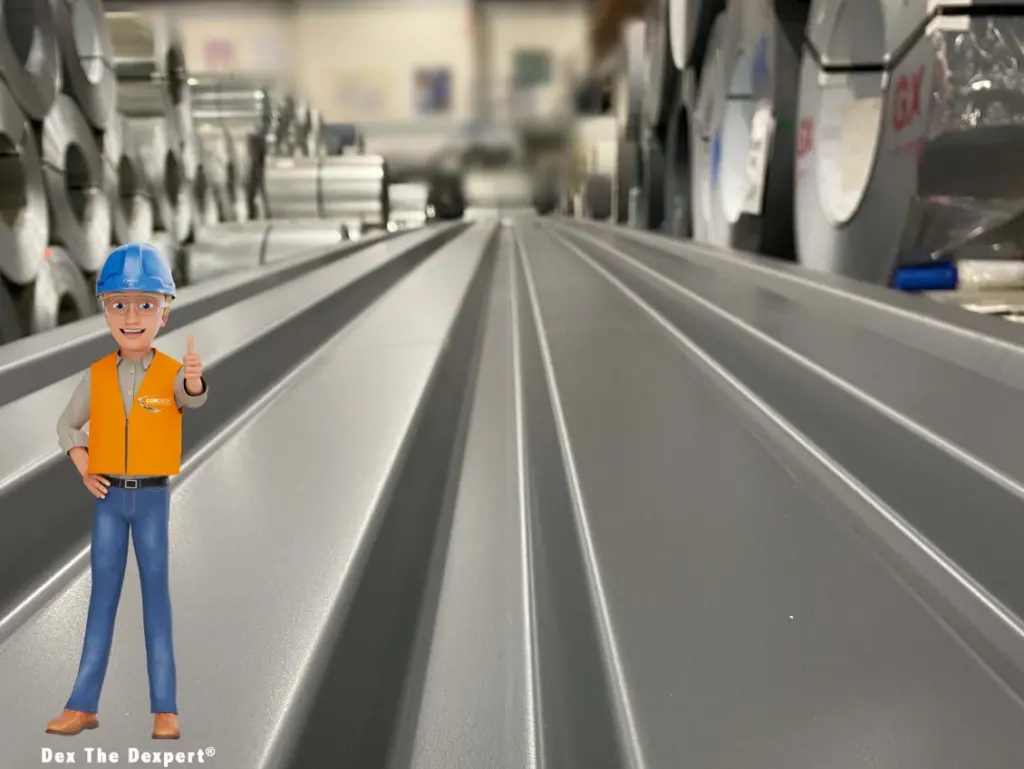

Continuing again from the previous blog post, we have some tips to offer to help you achieve a successful fall construction season!
Tips for Successful Fall Construction
- Plan Ahead: Start your project planning well in advance to account for potential weather disruptions and ensure that all necessary permits and materials are secured.
- Flexible Scheduling: Build flexibility into your construction schedule to accommodate unexpected weather changes. Use weather forecasting tools to anticipate periods of rain or extreme temperatures.
- Heating Solutions: For projects that involve materials sensitive to cold temperatures, consider investing in heating solutions to maintain optimal curing conditions.
- Safety First: With the possibility of wet or icy surfaces, prioritize safety by providing anti-slip measures, proper lighting, and personal protective equipment.
- Leaf Removal: Regularly clear leaves and debris from the construction site to prevent accidents and maintain a clean working environment.
- Communication: Keep open lines of communication with your team, contractors, and suppliers. Regular updates and collaboration are essential for adapting to changing conditions
Continuing from the previous blog post, we’ll now explore the considerations for successful construction during the fall season.
Considerations for Fall Construction
- Weather Variability: While fall weather is generally more predictable than other seasons, unexpected rain or sudden drops in temperature can still occur. Be prepared to adjust schedules accordingly and implement protective measures for materials and equipment.
- Leaf Management: Falling leaves can accumulate on construction sites, potentially leading to slips and reduced visibility. Regular cleaning and maintenance are necessary to ensure a safe and organized work environment.
- Material Storage: Cooler temperatures can affect certain construction materials, such as adhesives and concrete. Ensure proper storage conditions and, if necessary, provide climate control to prevent material degradation.
- Seasonal Workers: Fall is a popular time for many industries, including agriculture and retail, to hire seasonal workers. This might impact the availability of skilled labor for your construction project. Plan ahead and secure your workforce early.


The fall season, with its crisp air and vibrant foliage, brings a unique set of opportunities and challenges for construction projects. As the summer heat starts to wane and the winter cold is still on the horizon, fall provides an ideal window for various construction endeavors. In this blog post, we’ll explore the benefits of successful construction during the fall season.
Benefits of Fall Construction
- Moderate Weather Conditions: The fall season offers more moderate temperatures compared to the scorching heat of summer or the freezing cold of winter. This allows construction crews to work comfortably and efficiently without the risk of heat-related illnesses or the challenges posed by freezing conditions.
- Stable Ground Conditions: In many regions, the ground is relatively stable during the fall due to decreased rainfall compared to spring. This stability can simplify excavation, foundation laying, and other groundwork tasks.
- Reduced Humidity: Fall typically brings lower humidity levels, which can be advantageous for projects that involve painting, sealing, or other tasks sensitive to moisture.
- Extended Daylight Hours: With daylight hours gradually decreasing, fall still offers ample daylight for construction work. This extended time frame allows for increased productivity and flexibility in scheduling.
In the ever-evolving landscape of construction materials, metal decking has emerged as a revolutionary solution that combines strength, durability, and versatility. From towering skyscrapers to sprawling commercial complexes, metal decking has become a staple in modern construction projects.
Metal decking is adaptable to various architectural designs and construction requirements. It can be used in a wide range of projects, from residential buildings to industrial complexes.
- High-Rise Buildings: Metal decking is a popular choice for constructing skyscrapers due to its ability to support heavy loads over long spans. It enables the creation of tall, aesthetically pleasing structures with minimal internal columns.
- Commercial Centers: Shopping malls, office complexes, and entertainment centers benefit from metal decking’s rapid installation process, which allows these spaces to open for business sooner.
- Infrastructure Projects: Metal decking is commonly used in bridges and elevated roadways, as it can withstand the forces generated by heavy traffic and environmental conditions.
- Residential Construction: From apartment complexes to single-family homes, metal decking offers a cost-effective solution for creating safe and durable living spaces.

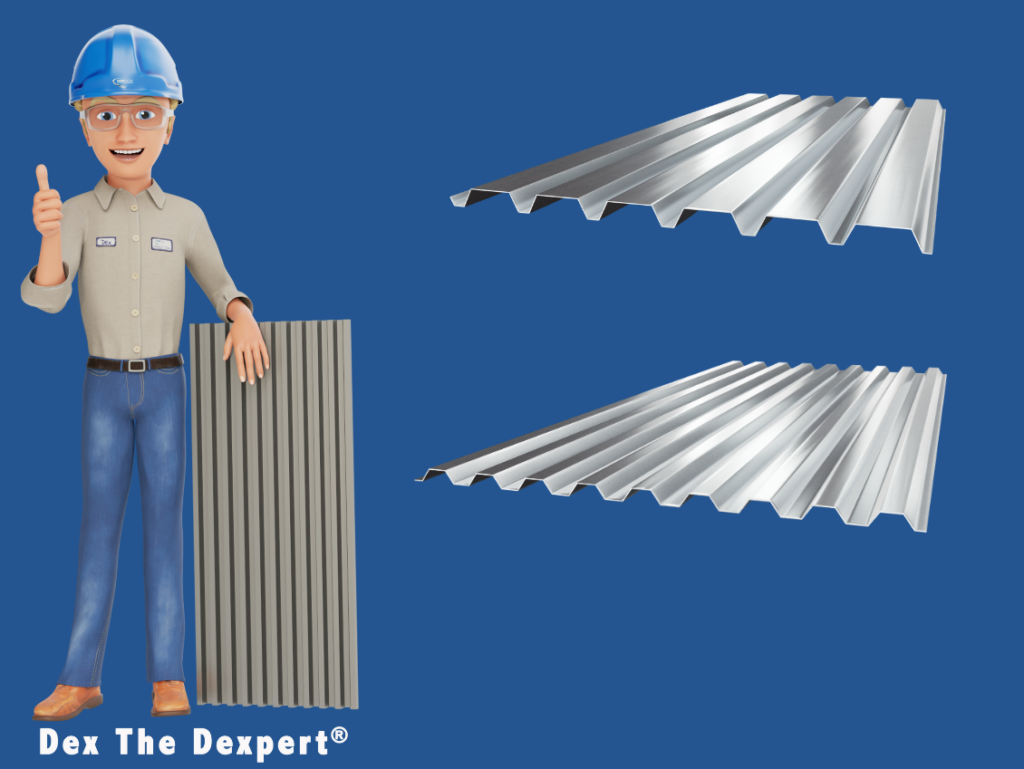
In the realm of modern construction, innovation is key to building structures that stand the test of time. One such innovation that has gained considerable traction is the use of metal deck in construction projects. While traditional materials like wood and concrete have their place, metal decking offers a plethora of advantages that are hard to ignore. In this blog post, we’ll dive into the world of metal decking and explore the remarkable benefits it brings to the table.
What is Metal Decking?
Metal decking, often made from steel, is a structural material used to create composite floor systems in multi-story buildings, bridges, and various other construction projects. It typically consists of flat panels with corrugated or ribbed profiles, designed to provide strength, stability, and durability to the structure.
- Strength and Load-Bearing Capacity:
Metal decking is engineered to offer exceptional strength and load-bearing capacity, making it an ideal choice for high-rise buildings and heavy-duty infrastructure. Its structural integrity ensures that it can handle heavy loads and distribute them evenly, minimizing the risk of structural failure.
- Fire Resistance:
Safety is paramount in any construction project, and metal decking shines in this aspect. Steel, the primary material used in metal decking, is inherently fire-resistant. It doesn’t burn, warp, or release toxic fumes, making it a reliable choice for fire-prone areas or buildings where fire safety is a priority.
- Speed of Construction:
Metal decking is known for accelerating the construction process. Its panels are pre-fabricated and can be easily installed, reducing on-site labor time. This not only helps in meeting tight project deadlines but also minimizes disruption to the surrounding environment.
- Cost-Efficiency:
While the initial cost of metal decking might be slightly higher than traditional materials, its long-term benefits more than make up for it. Its durability, low maintenance requirements, and reduced need for future repairs or replacements can lead to significant cost savings over the life of the structure.
- Versatility and Flexibility:
Metal decking offers architects and designers greater flexibility in designing spaces. Its versatility allows for open floor plans and creative architectural elements, giving builders the freedom to bring their visions to life.
- Sustainability:
In an era where sustainable construction practices are paramount, metal decking stands out. Steel is recyclable and can be repurposed, reducing the demand for new raw materials. Additionally, the efficiency in construction, reduced waste, and energy savings during the life of the building contribute to its overall environmental friendliness.
- Acoustic and Thermal Properties:
Metal decking can enhance a building’s acoustic and thermal performance. When used as part of a composite floor system, it can help dampen noise transmission between floors and improve energy efficiency by serving as a thermal barrier.
- Longevity:
Metal decking’s durability and resistance to corrosion mean that structures built with it are likely to have a longer lifespan compared to those constructed with more traditional materials.
In conclusion, metal decking is revolutionizing the construction industry with its array of benefits. From its exceptional strength and fire resistance to its cost-efficiency and sustainability, it’s a material that offers a holistic solution to many of the challenges faced in modern construction. As the industry continues to evolve, metal decking is undoubtedly poised to play a pivotal role in shaping the buildings of the future.
Have you ever thought about ways to use metal deck for fun and unique projects? While metal deck and corrugated steel might not be the first thing to come to mind, you can build many different things and use metal deck in so many ways. Use this blog post for some inspiration!
- Create an Accent Wall
- An accent wall made of metal deck can easily add an industrial vibe to the room you are decorating.
- Backsplash
- If you prefer a rustic style over something more modern, you could use metal deck in your kitchen as a backsplash or even build a kitchen island from metal deck.
- Flower and Garden Beds
- Whether you want to expand your gardening area or add some flowers for a nice touch, metal deck is great to use for building raised garden and flower beds.
- Roofs for Birdhouses
- While metal deck can be used on our own homes as roofs, we can also make these roofs for birdhouses too.
There are many ways you can use metal deck for fun, and these are just a few to hopefully get you inspired. If you need any metal deck for your fun projects, give one of our metal deck Dexperts® a call!
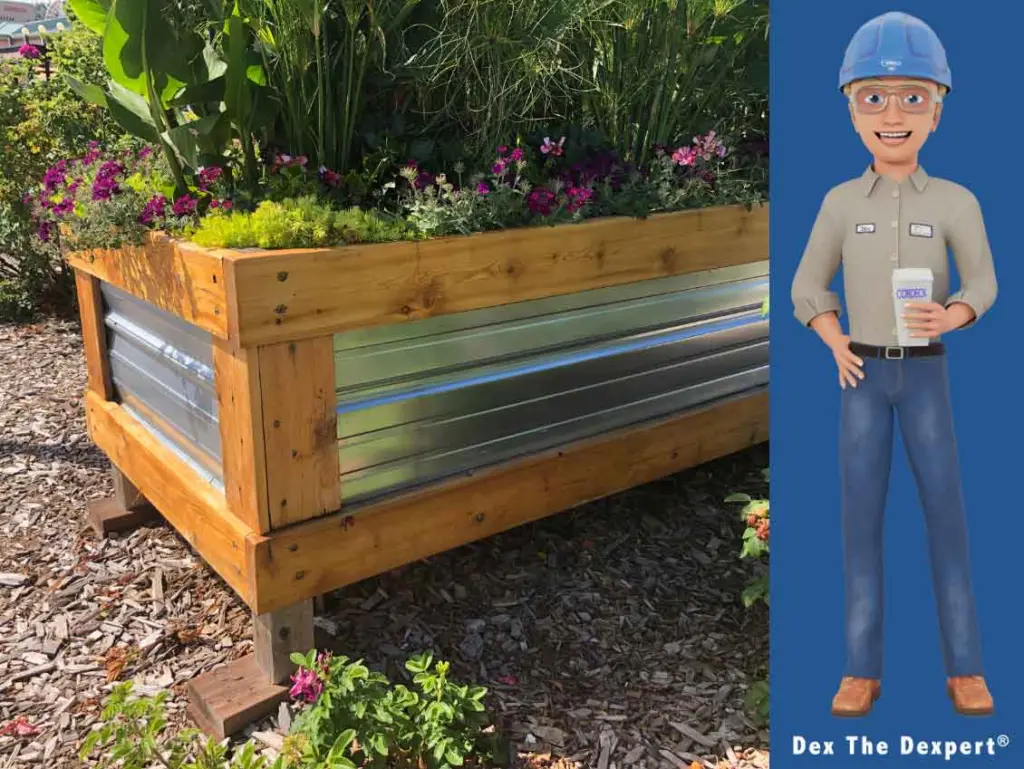
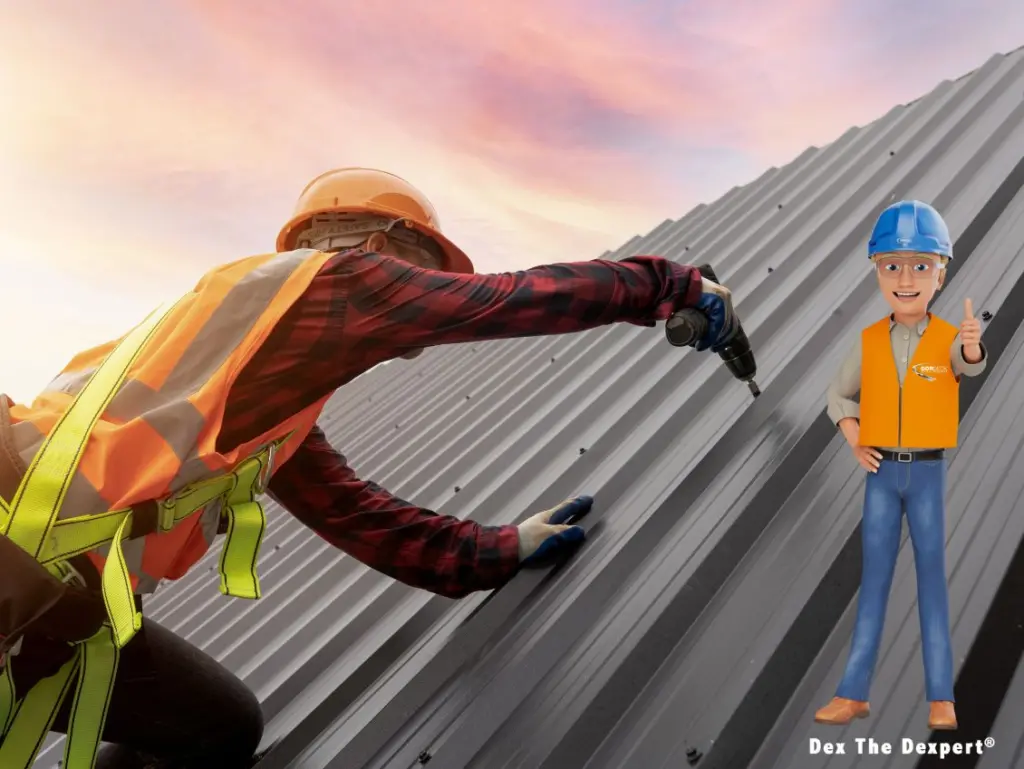
Metal roofing has been an up-and-coming trend. Metal is now one of the most popular materials for roofing on the market. Besides style, there are a lot of benefits that come with having a metal roof as well.
Here are some of my best-known facts about metal roofing!
- Metal roofing dates way back to World War II. A coating was first developed in England to camouflage metal roofs of important buildings and to protect them from German air raids. This original formula has since been improved for durability and longevity.
- There is a difference between stone-coated metal roofing and traditional metal roofing. Before stone-coated metal roofing, many homeowners would shy away from conventional metal roofs because of their industrial look. By adding this stone coating, this can add colors and textures that replicate the looks of shingles, tiles, or shakes.
- Metal roofs provide a long-term valued lifespan. This can be two to three times longer than traditional materials like asphalt and tiles.
- Metal is the most energy-efficient material out of all other roofing materials. Metal roofs are known to reflect heat away from buildings, where asphalt does the opposite and will absorb the heat with the heat radiating down towards the buildings.
- Metal roofing provides a high rate of hail protection.
- Besides hail protection, metal roofing is known for being able to withstand hurricane-force winds.
- Metal also has the highest rating when it comes to fire protection as well.
- Metal is one of the lightest roofing materials on the market. Compared to an average 45,000-pound asphalt shingle roof, a metal roof can weigh anywhere between 3,500 to 4,500 pounds. Heavier is not necessarily better when choosing material for your roof.
- Metal roofing is sustainable and environmentally friendly. While metal roofing can last two to three times longer than any other traditional type of roofing materials, metal also doesn’t rely on petroleum-based raw materials.
- Metal roofing can protect against anything Mother Nature might throw at you.
You may be buying steel roof deck, but have you ever wondered about the history behind the product that you buy? I’ve got a little bit of history to offer you on steel roof deck!
To start off, steel roof deck is corrugated sheets of metal that are designed and used for building a roof or composite floor. Steel beams then support the roof deck while the roof deck supports and reinforces the concrete. Steel decking is the perfect material to use if you are building a multi-story structure of any type.
With metal roof deck, there are different types of applications. Some of these can include putting up and strengthening mezzanines, supporting, and reinforcing roof systems, as well as constructing steel canopies.
Besides different types of applications, there are also different types of metal roof decking, like B deck, N deck, A deck, and F deck.
You can learn about all the different types of roof deck that we have to offer! Not seeing what you’re looking for? Give one of our Dexperts® a call, they love to talk all things metal deck!
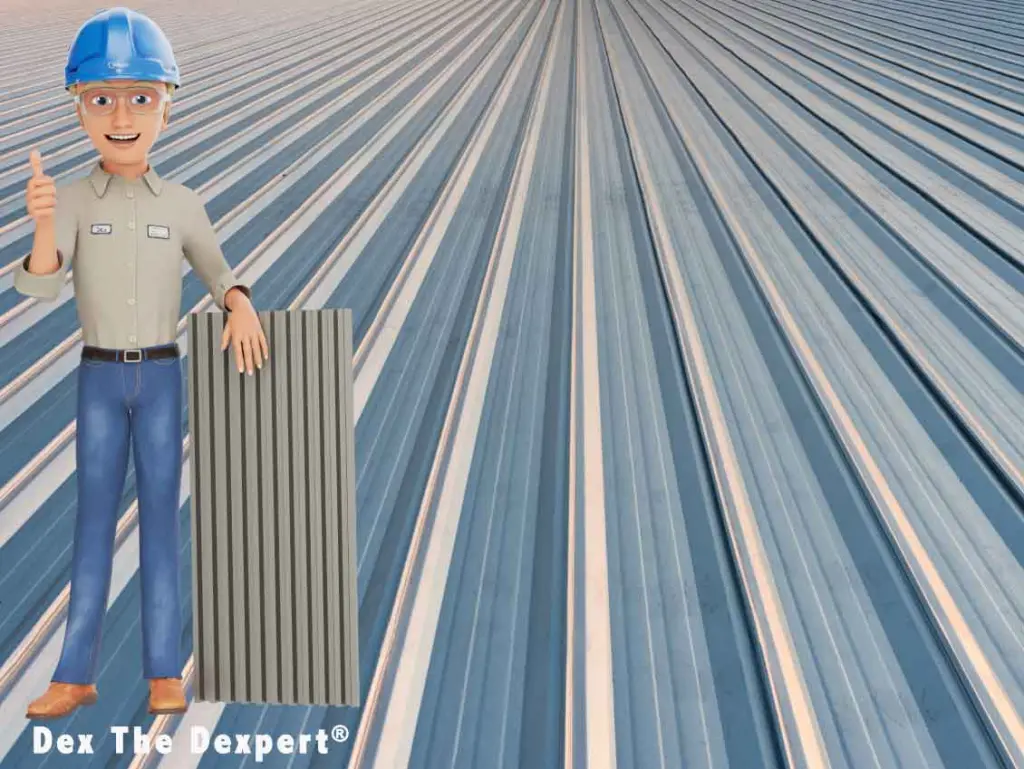
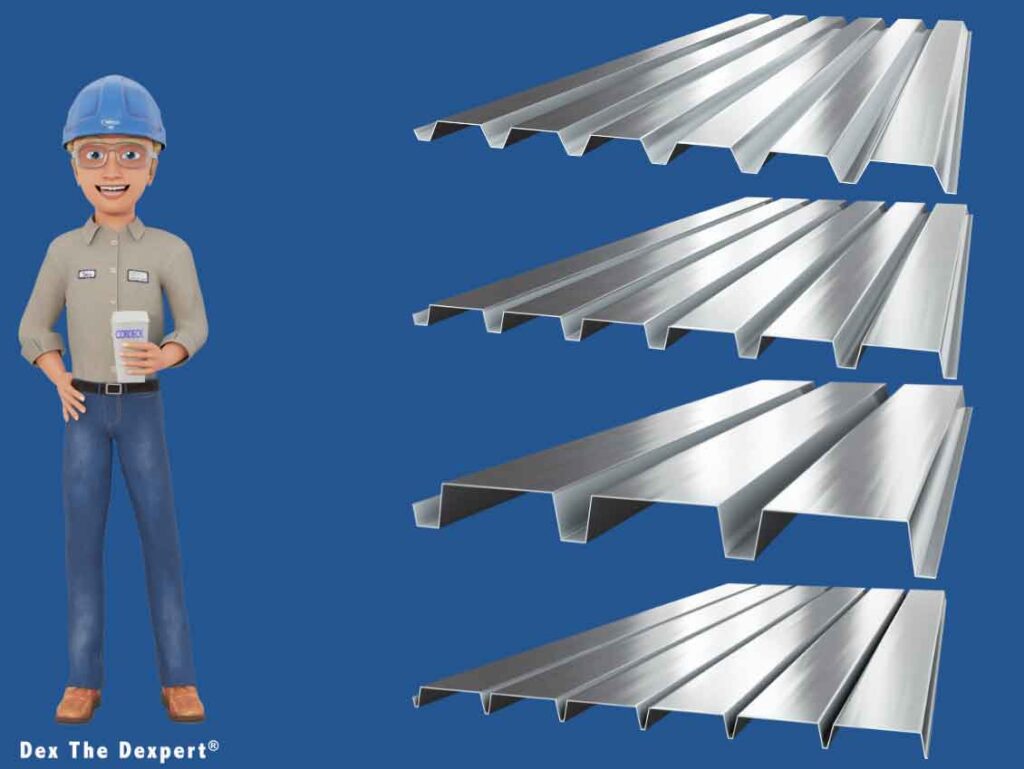
Here at Cordeck, we carry four popular types of metal roof deck, which includes B deck, F deck, N deck, and A deck. These are all available in a variety of gauges and widths. We also have N deck and B deck available complete with acoustical perforations and an appropriate sound absorption material for noise attenuation. These kinds of metal deck are perfect choices for gymnasiums, auditoriums, and natatoriums.
B-Deck
B Deck is one of the most economical types of metal deck out there. B Deck is also very easy to install. The ribs are 6 inches wide and there are also legs that can be interlocked to create side laps.
N-Deck
N Deck can also be used for roofs or ceilings. Compared to B Deck, N Deck has more depth, and this is ideal for increasing the span without needing to use thick materials.
A and F-Deck
These types of profiles are considered obscure, but they do have a couple of differences. A Deck has a narrower design and the spacing between each rib measures 2-2.5 inches. This makes it less durable, but it can be used during repair work.
F-Deck’s ribs have clearance that is slightly wider than A-Deck. F-Deck is also used for repair work on already existing metal deck systems that are found in older buildings. It is not advised to be used as a replacement for the B-Deck and N-Deck.
For all our roof deck specs, head to our Metal Roof Deck page. Not seeing what you’re looking for? Give one of our Dexperts® a call! They love to talk all things metal deck.
Our In Floor System has conquered the challenge of power and data management transitions by merging the structural floor with the building’s wire distribution.
Our system manages, organizes, and protects your data, providing endless design possibilities. Preset activations bring power and data service where you need it, maximizing your building’s design. Our system lays directly on the joist, creating a sturdy subfloor that eliminates the typical 2-pour of concrete, on-grade.
Our floor systems are typically ideal for casinos, office buildings, fitness centers, libraries, higher education facilities, and government offices.
There are tons of other additional benefits that our system provides like flexibility for future expansion, moves and changes will not disrupt business, optimum security for power and data cables, activations are accessed at finished floor level, routes power and data cables from panels to the point of use, and efficient installation on steel frames and on-grade applications.
Interested about how our In Floor system could benefit you? Give a Dexpert® a call, we’d love to help!
[email protected] | 877-857-6400
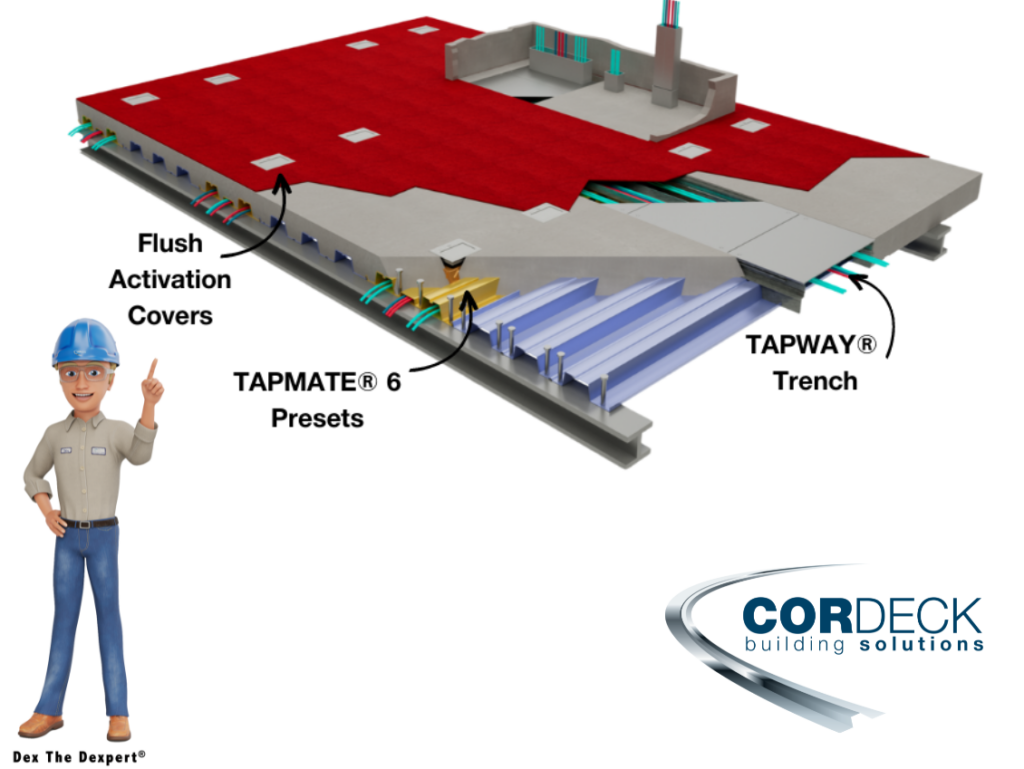
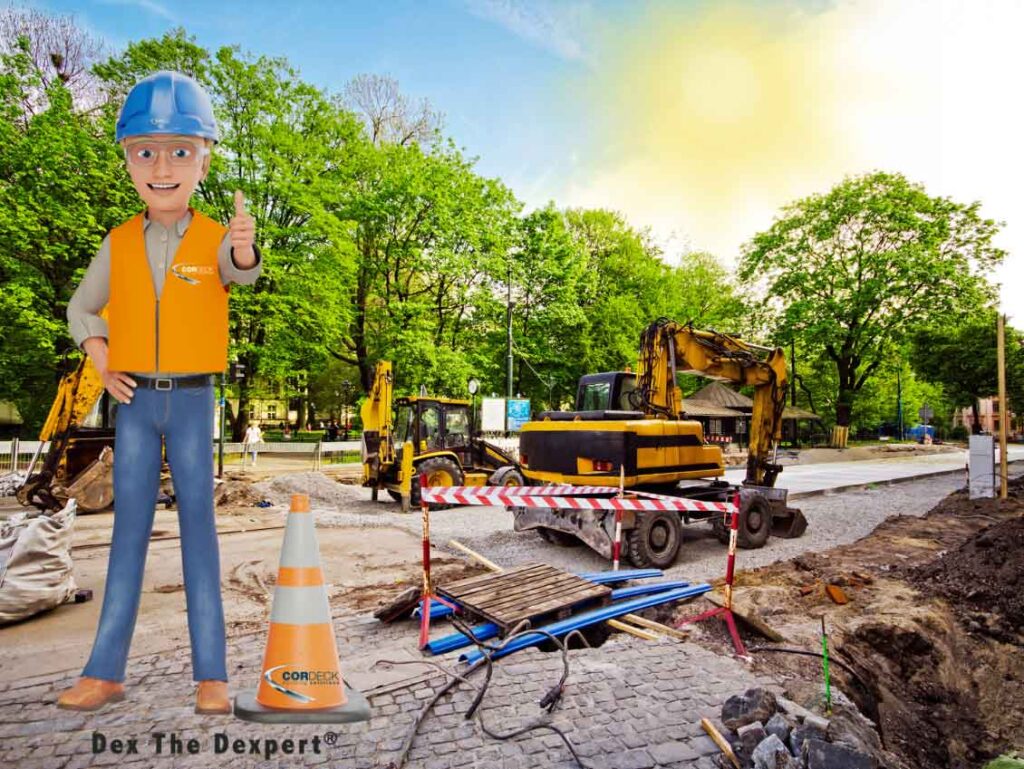
As we enter the month of July, construction begins to peak as well as the hot temperatures of the summer. It is always important to keep yourself safe from the heat while working, whether you are outside on a job site, or inside the plant.
Know the Signs of Heat-Related Illnesses
There are several heat-related illnesses, such as heat stroke, heat exhaustion, heat cramps, and heat rash. The most severe illness is heat stroke and this can be characterized by:
- Confusion
- Fainting
- Seizures
- Excessive sweating or red, hot, and dry skin
- Very high body temperature
Employees should always be educated on protection and prevention from heat-related illnesses. They should know the proper ways to keep themselves safe from heat-related illnesses. Here is a list of ways employees can protect themselves:
- Drink a lot of fluids and cool down periodically
- Wear sunscreen
- Wear proper clothing
- Monitor themselves and their coworkers
You can learn more about heat safety here: https://www.constructionbusinessowner.com/safety/3-tips-ensure-heat-safety-construction-workers
Do you want to test your pre-existing knowledge about metal deck? We have the perfect resource for you! Our brand-new metal deck glossary includes all the standard terms and definitions that are typically used by manufacturers and others that are associated with the steel deck industry. As always, if you didn’t find a term you were looking for, you can give a Dexpert® a call! Here are a few examples of some terms you can find in our glossary.
Acoustical Deck:
Metal deck panels with perforations that is backed with insulation to create sound reduction.
Button Punch:
A tool used to connect interlocking side laps.
Cellular Roof Deck:
Is a traditional corrugated roof deck with a flat piece of steel welded to the underside for increased spanning and loading capabilities while creating enclosed cellular raceways.
Center to Center Span:
The distance between the centerline of the supporting structural members.
Composite Floor Deck:
Metal deck used as a form to create a structural concrete slab with additional metal deck as reinforcement. This type of metal deck has embossments to help the concrete adhere.
For a complete list of Metal Deck Terms visit our Metal Deck Resource Center
The CAC (Chicago Architecture Center) has highlighted 5 theaters in Chicago that features amazing architecture.
This article highlights theaters such as the Auditorium Building, the Chicago Shakespeare Theater (CST), Uptown Theatre, Writers Theatre, and the Davis Theater.
With Chicago being famous for its architecture, they are of course a part of the vibrant theatre scene.
The CAC has a lot of exciting information and architecture to learn about. Maybe time for a visit to Chicago!
Read more here!
We have a brand-new metal deck resource center! Everything you could possibly want to know and need to know about metal deck is right here. You can find everything from our Brochures to Product Spec Sheets, our FM Certificate, or a Dex The Dexpert® Color Page!
Still can’t find what you were looking for? Give a Dexpert® a call, we love to talk Metal Deck.
- Download our Roof Deck, Cellular Deck, Products & Capabilities Brochures.
- What are Side Laps & Metal Deck Profiles? We’ve got the answers.
- All our metal deck product spec sheets are at your fingertips, whenever you need them!
- Confused about metal deck terms? No worries, it happens to the best of us. Browse our glossary to refresh your memory.
- Need our FM Certificate of Compliance or SDI Certificate, download them here!
- Download Dex The Dexpert® color sheets or activity book.
- See our more popular FAQ’s. Still need help, contact a Dexpert®
Visit our RESOURCE CENTER
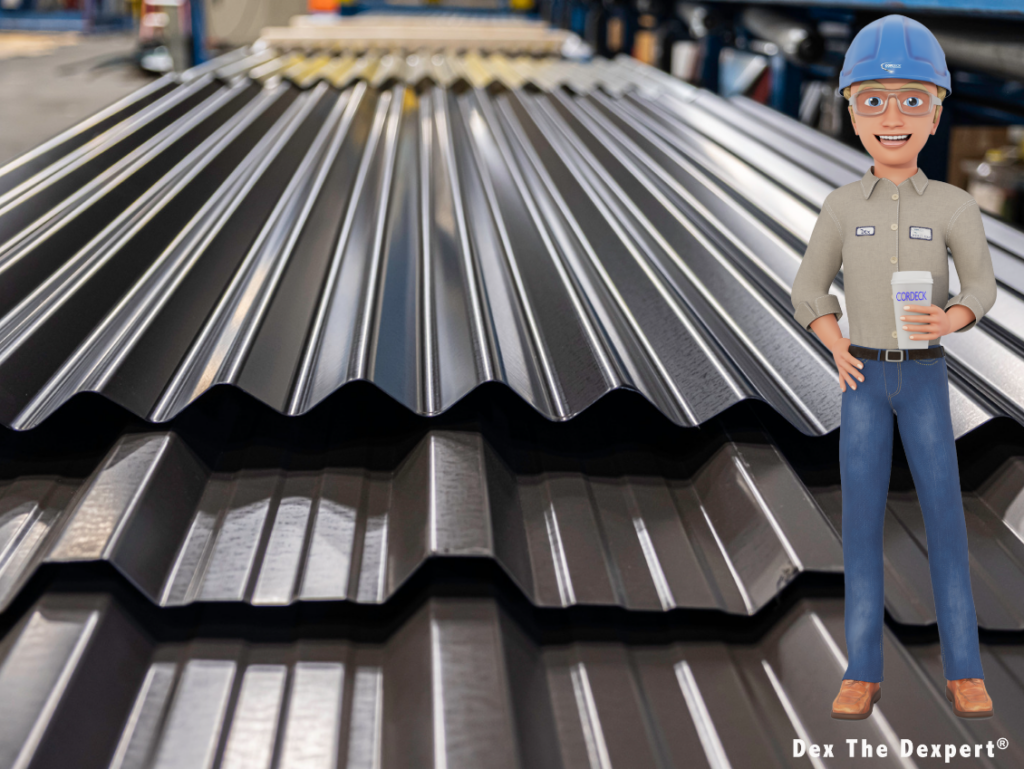
This year, national roofing week is June 4-10 and is an annual event to celebrate the importance of roofs and the roofing industry! The NRCA encourages the roofing community to inform the public about the crucial roles of roofs and roofing contractors that are in our lives every day and also to elevate the professionalism of the industry.
The NRCA also encourages its members to highlight their work and their team members on their social media pages with their themed roofing week schedule. Be sure to check out their social media this week and tag your photos with #NationalRoofingWeek for a chance to be featured yourself!
- Sunday, June 4 was National Roofing Week kickoff
- Monday, June 5 was for Signature projects (companies residential or commercial projects)
- Tuesday, June 6 was for Charitable projects (companies charitable work and giving)
- Wednesday, June 7 is for Employee appreciation (hardworking members of your staff and crews)
- Thursday, June 8 is for Employee training (demonstrations of how you train your team)
- Friday, June 9 is for Celebration (ways your team celebrated National Roofing Week!)
- Saturday, June 10 is for wrapping up National Roofing Week
Have you ever wondered what all the different parts and pieces of metal deck were and what their purpose is? Well, this blog entry has a lot of information to provide on metal deck anatomy!
Metal deck can have all different kinds of profiles and these profiles can then be broken down to show the different components of metal deck.
Starting with the cover width, this is the area from the midpoint of the flanges that are furthest apart on a sheet of metal deck.
Now what is a flange you ask? The flange is the flat part of the middle deck, on either the top or bottom of the ribs.
Ribs are the indents between each flange, and these can be different depths.
The pitch is the distance from the center of each corrugated pattern that is repeated on the metal deck.
A flute is the fold or bend in the metal deck.
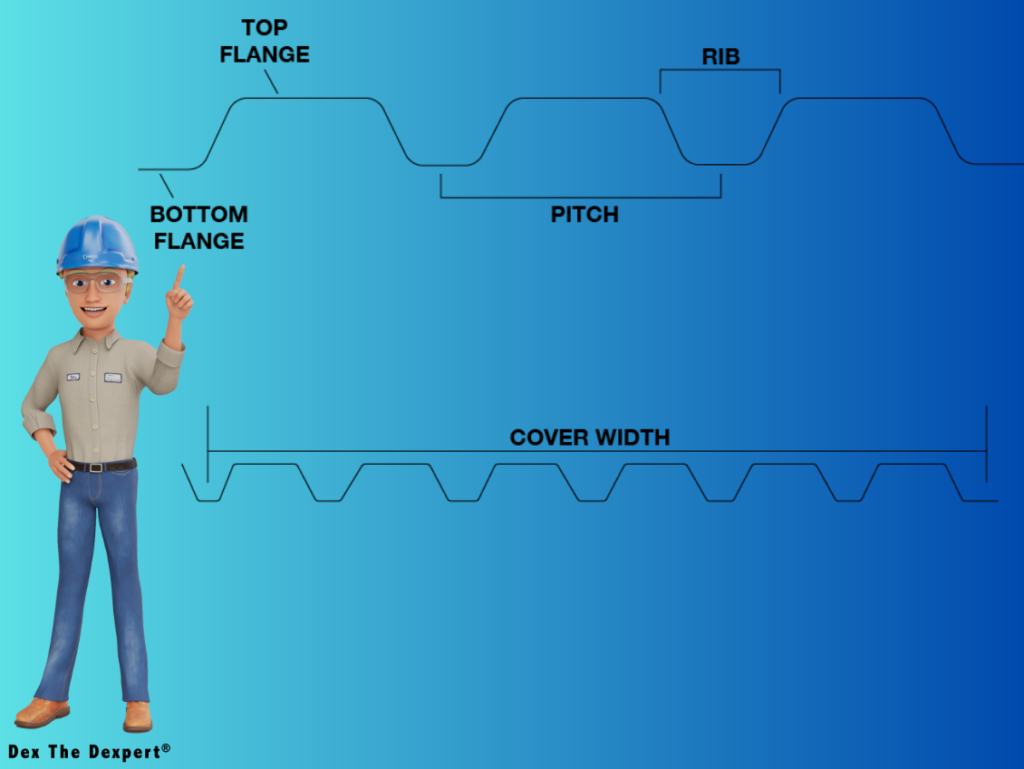
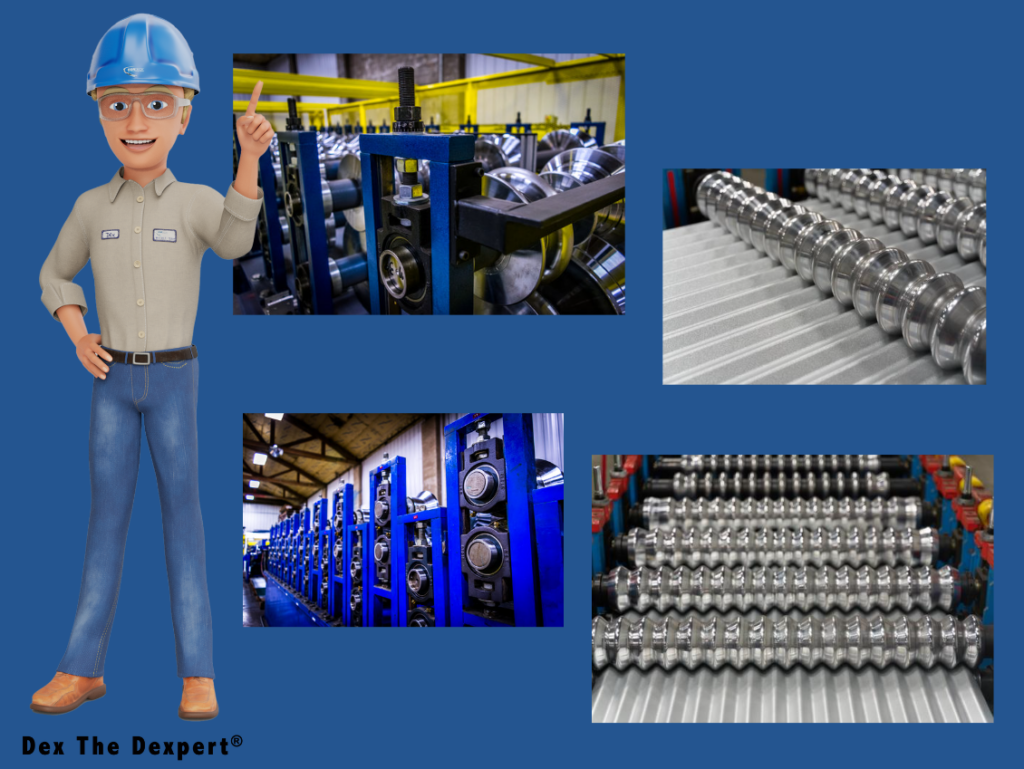
In the history of roll forming and the roll former machine, Ewald Stellrecht is the man who is known to be the creator of the first portable roll former here in the United States, while the first roll former was actually launched in the UK. Roll forming is believed to have begun as early as 600 BCE, in the Middle East and South Asia.
Believe it or not, the design for roll formers actually came from drawings done by Leonardo Da Vinci. And it was not until the 1600s that the roll former became widely used.
With a roll former, you can produce different sizes and material thicknesses using the same roll of steel. It just comes down to changing out the dies in the machine.
Cordeck uses a roll former to produce all of the metal that you need!
Corrugated metal was invented by British architect and engineer Henry Palmer. He was also granted a patent in 1829. Corrugated metal was originally known as CGI, corrugated wrought iron. In the corrugation process today, we use a method called “roll forming”.
Different shapes and sizes of corrugated metal can be achieved by simply changing the dies. Galvanization was also developed in 1837, in France, this means the metal is treated with zinc which prevents rusting.
So, if it was not for Henry Palmer, there might not be a Cordeck today……that’s a sad thought.
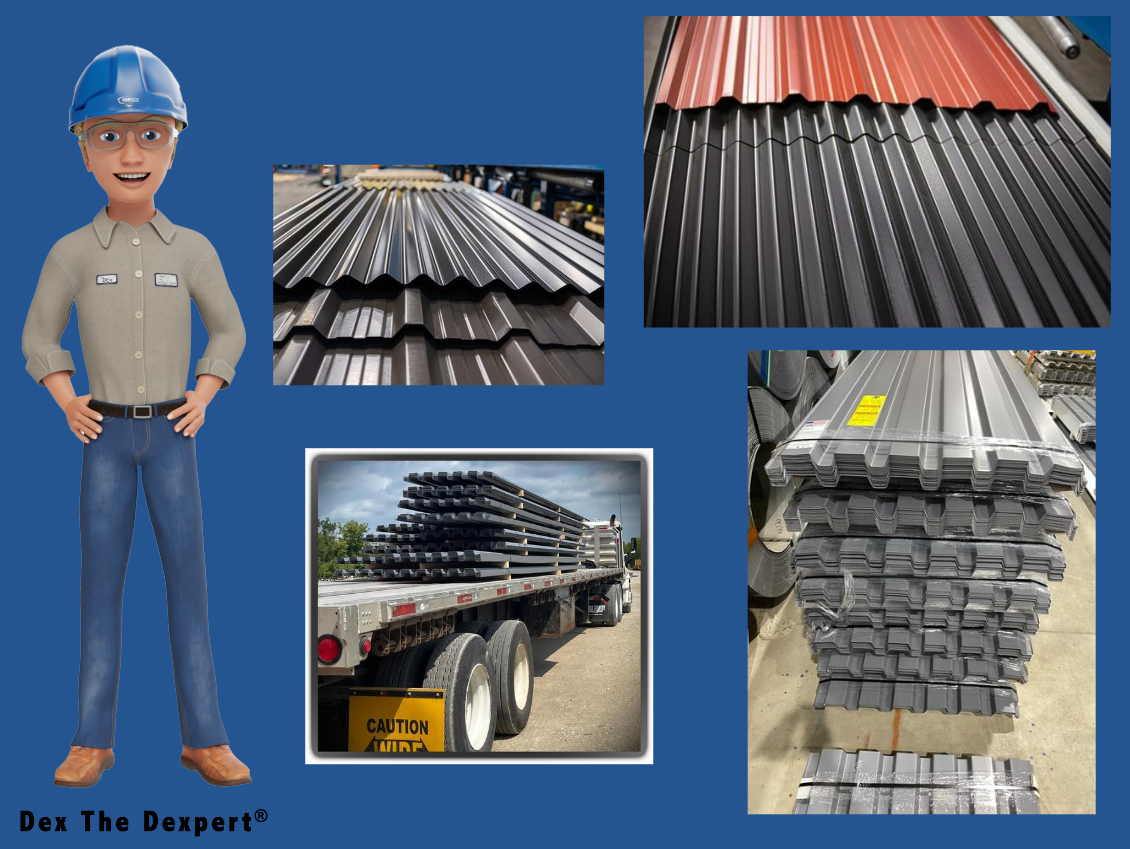
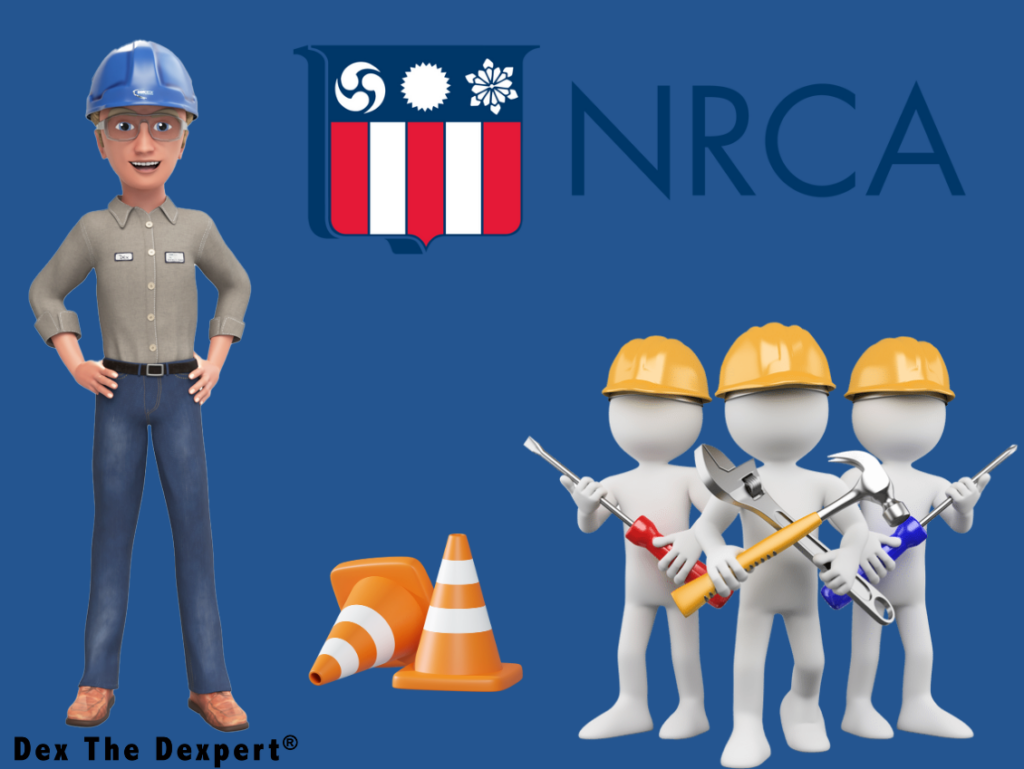
“Construction employment added 15,000 jobs on net in April, according to Associated Builders and Contractors. On a year-over-year basis, the industry has expanded by 205,000 jobs—an increase of 2.7%.
The construction unemployment rate fell from 5.6% in March to 4.1% in April. The national unemployment rate for all industries fell from 3.5% in March to 3.4% in April as the U.S. economy added 253,000 jobs.
Nonresidential construction added 800 jobs in April, with gains in one of the three subsectors. Nonresidential specialty trade contractors added 10,700 jobs for the month; heavy and civil engineering lost 8,100 jobs; and nonresidential building lost 1,800 jobs.”
Read more from the NRCA here.
Construction safety week runs from May 1st-5th in 2023.
“Every day, we walk onto construction sites with one goal in mind – get the job done safely. We take great pride in the role we play shaping the communities in which we live, work and play. But even more than that, we feel an unwavering responsibility to one another, our families, and friends to make sure we all return home safe every day.
In our industry, safety is not just a series of procedures and protocols, but a unified culture that empowers every person on the job site – from craft professionals to project and business leaders – to recognize and act on any potential risk. We’re building the awareness of holistic safety, requiring a strong mind, strong body, and the right state of mind for every task, on every job, every day. That’s why more than 70 national and global construction firms join forces for Safety Week with a single aim: to provide the vision, insights, resources, and equipment standards to inspire everyone in the industry to be leaders in safety.
Safety Week is a show of force, an opportunity for people, companies, and even competitors, to work together and celebrate the incredibly hard work of people in our industry who make safety the foundation of everything they do.
Celebrate safety where you work and demonstrate your continued commitment to building a stronger, safer industry.
Safety Week was started in 2014 when more than 40 national and global construction firms comprising the Construction Industry Safety Initiative (CISI) group and the Incident and Injury Free (IIF) CEO Forum joined forces with a single aim: to inspire everyone in the industry to be leaders in safety.
In 2016, Safety Week was more formally branded and started to take shape as the fully integrated annual campaign with a growing number of members and sponsors that exists today.”
Learn more about Safety Week and how you and your team can pledge on their official site.
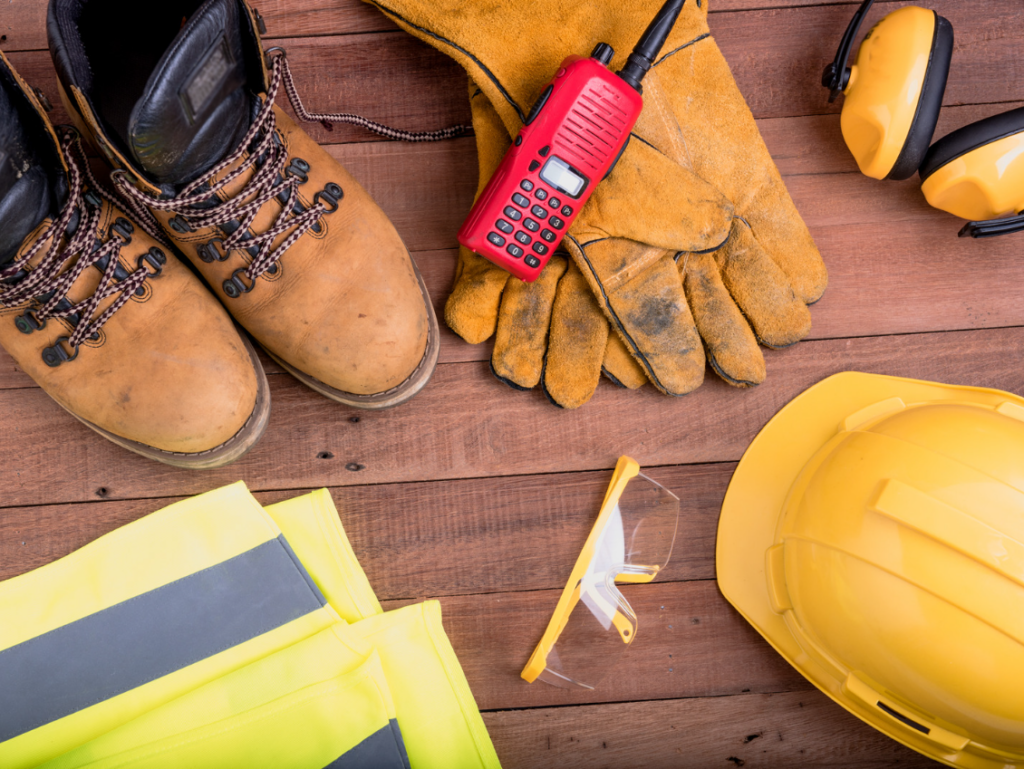
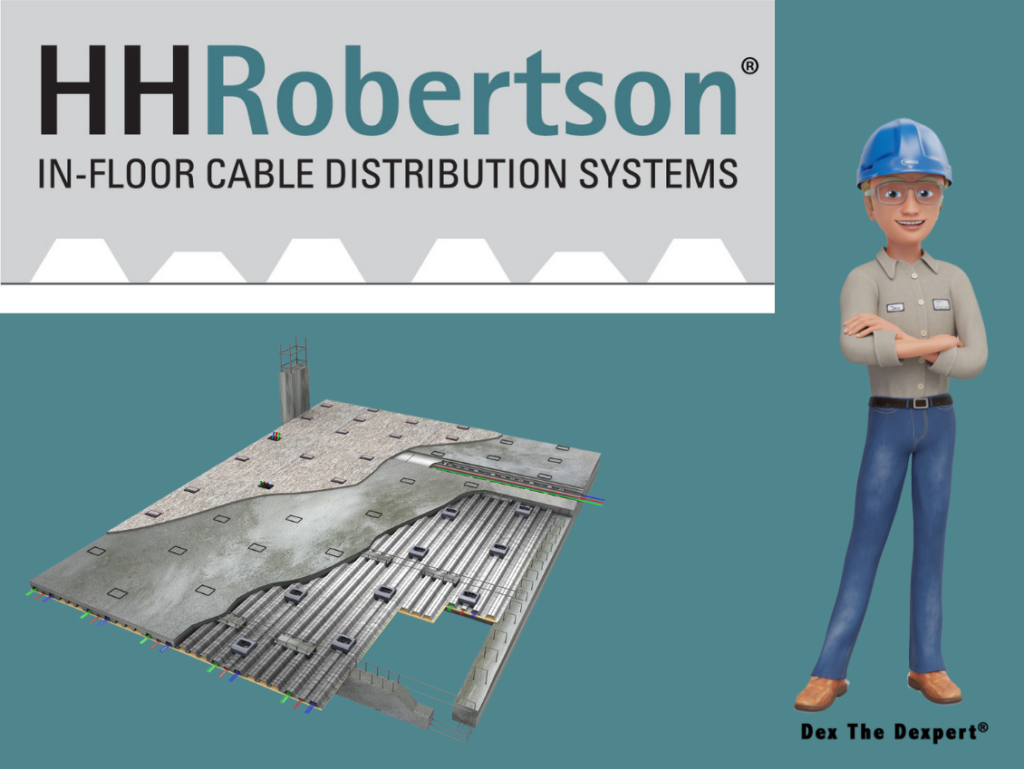
Did you know that Cordeck acquired HH Robertson’s In Floor Cable Distribution in 2015 and we are committed to serving the aftermarket needs of this system?
HH Robertson introduced the In Floor Cable Distribution System back in 1931. Then, in 2015, Cordeck acquired the HH Robertson In Floor System. To this day, Cordeck remains committed to serving the aftermarket needs of this system.
You can find all the HH Robertson information you might need or want right here on our website! We offer our HHR Aftermarket Product Catalog, HHR Aftermarket Q-Floor Raceway Manual, and HHR Aftermarket Metal Deck Information. You can also contact us at 262-891-3237 or [email protected].
Cordeck is a full-service steel deck manufacturer and stock distributor. The company has grown from three full-time employees to a team that includes a nationwide network of sales representatives. Cordeck has remained responsive to the growing industry by continually keeping in touch with customers’ needs by increasing product lines available. The most recent addition to product offerings is electrified cellular deck systems.
Today Cordeck manufactures and stocks many types of corrugated steel deck products, flashing, and trim accessories for building construction. These come in a variety of gauges and finishes and, as always, we are pleased to meet our customer’s specifications. We also have detailing and engineering services available as well as a sales team who provides complete customer satisfaction and answer any questions our customers have pertaining to product knowledge and production.
After 34 years in business, Cordeck is still dedicated to doing “Whatever It Takes” to lead the industry in quality and customer service. Ken’s vision has laid the foundation for a company that can boast its primary sales evolve from satisfied customers. Customers soon come to recognize that at Cordeck they’ll never come up short on quality, tradition, and most importantly customer service.
